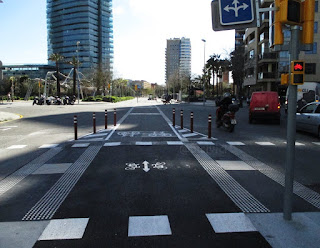 The rise of electric scooters in Barcelona, forced the
City Council to approve a local legislation for e-scooters in 2017. Now,
the Spanish Traffic Directorate (DGT) has published a directive which
will be a provisional regulation for electric scooters and for what we
call personal mobility vehicles (PMV).
The rise of electric scooters in Barcelona, forced the
City Council to approve a local legislation for e-scooters in 2017. Now,
the Spanish Traffic Directorate (DGT) has published a directive which
will be a provisional regulation for electric scooters and for what we
call personal mobility vehicles (PMV).
Main points of the regulation:
- Legal PMV can only be propelled by electric motors and can only reach speeds of between 6 and 25 kph.
- PMV with a seat will be only legal if they have an automatic balance system.
- Helmet will be compulsory or not depending on the local regulation.
- Only one person can use the vehicle. No passengers are allowed.
- The use of phones and headphones is banned.
- PMVs cannot be used in pedestrianised areas or on pavements (unless the local legislation allows it).
- Ligths and reflective clothing is compulsory at night.
- This regulation does not effect nor electric bicycles neither mobility scooters (mopeds), but some nonlegal PMV will be regulated as a mobility scooters.
Additional regulation in Barcelona:
- Minimum age of 16
- Helmet and bell are required on heavy e-scooters (more than 25 kg).
- Can be used in bicycle lanes.
- Can be used in parks at 10 kph.
- Light e-scooters can be used in pedestrian streets.
- Can be only used in 30 kph roads. Not sure whether with the new Spanish regulation now can be used in any street.



